Details for Proposed FTA


ASEAN-GCC FTA
ASEAN-Gulf Cooperation Council Free Trade
Agreement (Proposed/Under Study: 2023)


Philippines-Mexico FTA
Philippines-Mexico Free Trade Agreement
(Proposed/Under Study: 2017)



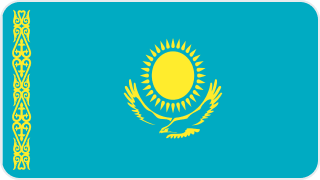


EAEU-FTA
ASEAN-Eurasian Economic Union Free Trade
Agreement (Proposed/Under Study: 2016)


Philippines-Chile FTA
Philippines-Chile Free Trade Agreement
(Proposed/Under Study: 2015)

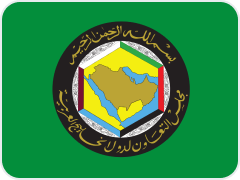
ASEAN-GCC FTA
ASEAN-Gulf Cooperation Council Free Trade Agreement (Proposed/Under Study: 2023)
The Significance of the Agreement
Agreement Overview
The proposed ASEAN-Gulf Cooperation Council (GCC) Free Trade Agreement (FTA) aims to enhance economic cooperation and reduce trade barriers between the 10 ASEAN member countries (Brunei, Cambodia, Indonesia, Laos, Malaysia, Myanmar, the Philippines, Singapore, Thailand, Vietnam) and the six GCC member states (Bahrain, Kuwait, Oman, Qatar, Saudi Arabia, United Arab Emirates). This agreement seeks to promote the exchange of goods, services, and investments by granting preferential access, ultimately fostering closer economic ties and boosting bilateral trade and investment.
Key Benefits

Reducing tariff and non-tariff barriers to facilitate trade between ASEAN countries and GCC states.

Encouraging bilateral investments through investment protection and promotion clauses.

Stimulating economic growth and creating jobs in both regions.

Providing better market access for ASEAN products in the GCC and vice versa.

Enhancing the competitiveness of businesses in both regions through improved market access and reduced trade costs.
Expected Effects
- Increased
Exports - Investment
Inflow - Strengthened
Economic
Ties
-
Increased Exports
Expanding the market for Philippine agricultural products, seafood, and electronic goods in GCC countries.
-
Investment Inflow
Encouraging GCC technology and financial services to invest in the Philippines.
-
Strengthened Economic Ties
Enhancing mutual economic ties and fostering sustainable growth.
The Significance of the Agreement Signing
The study and proposed negotiations for the ASEAN-GCC FTA represent a significant step towards deepening interregional economic relations. The key significances are:
Enhanced Interregional Relations
The proposed FTA aims to promote stronger economic ties between ASEAN and GCC, facilitating closer cooperation in various sectors. This strengthens diplomatic relations and opens new avenues for collaboration.
Economic Diversification
The agreement supports economic diversification by encouraging trade and investment in a broader range of sectors, reducing dependence on traditional markets, and enhancing economic resilience.
Market Expansion
By negotiating preferential access, both regions can expand their markets and create new opportunities for exporters and investors, leading to increased economic activity and job creation.
Support for SMEs
The proposed FTA aims to provide small and medium-sized enterprises (SMEs) in both regions with better access to each other’s markets. This supports the growth and development of SMEs, fostering inclusivity and diversity in the economy.
Regional Economic Integration
The agreement contributes to regional economic integration by strengthening economic linkages between Southeast Asia and the Gulf region, promoting stability, and encouraging cooperation within and between the regions.
Importance of Target Country Markets in the Agreement
Overview of GCC Countries
The Gulf Cooperation Council (GCC) consists of six member states with diverse economies and significant growth potential. The integration of these markets with ASEAN provides vast opportunities for businesses within the regions.
Economic Significance
- i. High Income Markets: GCC countries have high income levels and purchasing power, providing a substantial market for ASEAN products.
- ii. Strategic Location: The GCC region serves as a strategic gateway to the Middle East and North Africa (MENA) region.
- iii. Economic Diversification: GCC countries are actively diversifying their economies beyond oil and gas, creating opportunities in various sectors.
Major Industries and Trade Items
Oil, gas, and renewable energy.
Construction, transportation, and real estate.
Banking, insurance, and financial services.
Implementation Schedule of the Agreement (Proposed)
Partner Country Information
Country Overview and Economic Trends

-
Capital
Manama
-
Language
Arabic
-
Population
Approximately 1.7 million
-
Economy
Diversified economy with strong financial services and manufacturing sectors.
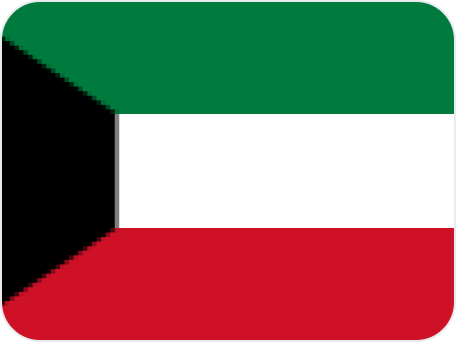
-
Capital
Kuwait City
-
Language
Arabic
-
Population
Approximately 4.3 million
-
Economy
Rich in oil reserves with a strong focus on energy exports.

-
Capital
Muscat
-
Language
Arabic
-
Population
Approximately 4.5 million
-
Economy
Diversified economy with significant investments in infrastructure and tourism.

-
Capital
Doha
-
Language
Arabic
-
Population
Approximately 2.9 million
-
Economy
Leading exporter of liquefied natural gas (LNG) with a growing financial sector.

-
Capital
Riyadh
-
Language
Arabic
-
Population
Approximately 35 million
-
Economy
Largest economy in the GCC, focused on oil, petrochemicals, and infrastructure development.

-
Capital
Abu Dhabi
-
Language
Arabic
-
Population
Approximately 9.9 million
-
Economy
Diversified economy with strengths in finance, tourism, real estate, and aviation.
Trade and Investment Opportunities
-
Trade Opportunities
GCC offers substantial potential for Philippine exports of agricultural products, electronics, and construction materials.
-
Agricultural Products
High demand for tropical fruits, seafood, and processed foods in the GCC market.
-
Electronics
Philippine electronic components and appliances are in demand in GCC countries.
-
Construction Materials
Opportunities for exporting construction materials to support the GCC's infrastructure projects.
-
Investment Opportunities
There are numerous opportunities for Philippine companies to invest in GCC's technology, finance, and real estate sectors.
-
Technology
Philippine IT companies can collaborate with GCC tech firms to enhance competitiveness.
-
Finance
Philippine financial services can enter GCC markets to offer banking and investment solutions.
-
Real Estate
Opportunities in the booming construction and real estate markets in the GCC region.

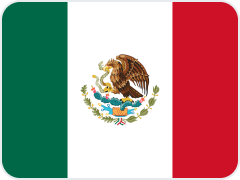
Philippines-Mexico FTA
Philippines-Mexico Free Trade Agreement (Proposed/Under Study: 2017)
The Significance of the Agreement
Agreement Overview
The proposed Philippines-Mexico Free Trade Agreement (FTA) aims to enhance economic cooperation and reduce trade barriers between the Philippines and Mexico. This agreement seeks to promote the exchange of goods, services, and investments by granting preferential access, ultimately fostering closer economic ties and boosting bilateral trade and investment.
Key Benefits

Reducing tariff and non-tariff barriers to facilitate trade between the Philippines and Mexico.

Encouraging bilateral investments through investment protection and promotion clauses.

Stimulating economic growth and creating jobs in both countries.

Providing better market access for Philippine products in Mexico and vice versa.

Enhancing the competitiveness of businesses in both countries through improved market access and reduced trade costs.
Expected Effects
- Increased
Exports - Investment
Inflow - Strengthened
Economic
Ties
-
Increased Exports
Expanding the market for Philippine agricultural products, seafood, and electronic goods in Mexico.
-
Investment Inflow
Encouraging Mexican technology and financial services to invest in the Philippines.
-
Strengthened Economic Ties
Enhancing mutual economic ties and fostering sustainable growth.
The Significance of the Agreement Signing
The study and proposed negotiations for the Philippines-Mexico FTA represent a significant step towards deepening bilateral economic relations. The key significances are:
Enhanced Interregional Relations
The proposed FTA aims to promote stronger economic ties between the Philippines and Mexico, facilitating closer cooperation in various sectors. This strengthens diplomatic relations and opens new avenues for collaboration.
Economic Diversification
The agreement supports economic diversification by encouraging trade and investment in a broader range of sectors, reducing dependence on traditional markets, and enhancing economic resilience.
Market Expansion
By negotiating preferential access, both countries can expand their markets and create new opportunities for exporters and investors, leading to increased economic activity and job creation.
Support for SMEs
The proposed FTA aims to provide small and medium-sized enterprises (SMEs) in both countries with better access to each other’s markets. This supports the growth and development of SMEs, fostering inclusivity and diversity in the economy.
Regional Economic Integration
The agreement contributes to regional economic integration by strengthening economic linkages between Asia and Latin America, promoting stability, and encouraging cooperation within and between the regions.
Importance of Target Country Markets in the Agreement
Overview of Mexico
Mexico is one of the largest economies in Latin America with a diverse industrial base and significant growth potential. Mexico offers substantial market opportunities for Philippine products and services due to its strategic location and demand for high-quality goods.
Economic Significance
- i. Large Consumer Market: Mexico has a vast consumer market with high purchasing power.
- ii. Industrial Diversity: Mexico is competitive in various industries such as automotive, electronics, and agriculture.
- iii. v
Major Industries and Trade Items
Mexico is a leading producer of automobiles and automotive parts.
Mexico has a strong electronics industry, including consumer electronics and electronic components.
Mexico is a major producer of agricultural products, including fruits, vegetables, and livestock.
Implementation Schedule of the Agreement (Proposed)
Partner Country Information
Country Overview and Economic Trends
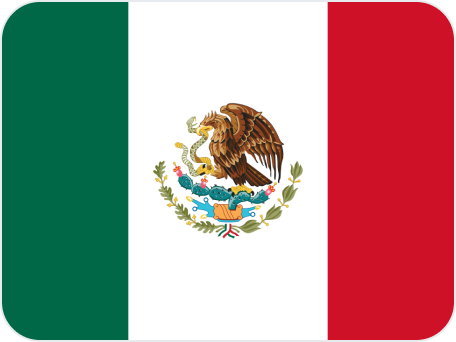
-
Capital
Mexico City
-
Language
Spanish
-
Population
Approximately 130 million
-
Economy
Highly developed and diverse, major industries include automotive, electronics, and agriculture
-
Trade
In 2023, trade volume with the Philippines was approximately $1 billion, with major Philippine exports being electronic products, seafood, and agricultural products, and major imports being machinery, automotive parts, and chemicals.
Trade and Investment Opportunities
-
Trade Opportunities
Mexico offers substantial potential for Philippine exports of electronic products, agricultural products, and seafood.
-
Electronic Products
Philippine electronic components and appliances have high demand in the Mexican market.
-
Agricultural Products
Philippine mangoes, bananas, and other agricultural products are popular among Mexican consumers.
-
Seafood
High demand for Philippine tuna, shrimp, and other seafood in Mexico's food market.
-
Investment Opportunities
There are numerous opportunities for Philippine companies to invest in Mexico's technology, manufacturing, and service sectors.
-
Technology
Philippine IT companies can collaborate with Mexican tech firms to enhance competitiveness in the global market.
-
Manufacturing
Philippine manufacturing companies can leverage Mexico's advanced manufacturing technology to improve production efficiency.
-
Services
Philippine service companies can enter the Mexican market to provide a range of services, including business process outsourcing (BPO) and financial services.





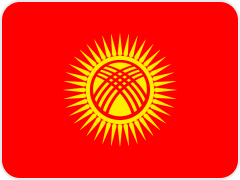
EAEU-FTA
ASEAN-Eurasian Economic Union Free Trade Agreement (Proposed/Under Study: 2016)
The Significance of the Agreement
Agreement Overview
The proposed ASEAN-Eurasian Economic Union (EAEU) Free Trade Agreement (FTA) aims to enhance economic cooperation and reduce trade barriers between the 10 ASEAN member countries (Brunei, Cambodia, Indonesia, Laos, Malaysia, Myanmar, the Philippines, Singapore, Thailand, Vietnam) and the five EAEU member states (Armenia, Belarus, Kazakhstan, Kyrgyzstan, Russia). This agreement seeks to promote the exchange of goods, services, and investments by granting preferential access, ultimately fostering closer economic ties and boosting bilateral trade and investment.
Key Benefits

Reducing tariff and non-tariff barriers to facilitate trade between ASEAN countries and EAEU states.

Encouraging bilateral investments through investment protection and promotion clauses.

Stimulating economic growth and creating jobs in both regions.

Providing better market access for ASEAN products in the EAEU and vice versa.

Enhancing the competitiveness of businesses in both regions through improved market access and reduced trade costs.
Expected Effects
- Increased
Exports - Investment
Inflow - Strengthened
Economic
Ties
-
Increased Exports
Expanding the market for Philippine agricultural products, seafood, and electronic goods in EAEU countries.
-
Investment Inflow
Encouraging EAEU technology and financial services to invest in the Philippines.
-
Strengthened Economic Ties
Enhancing mutual economic ties and fostering sustainable growth.
The Significance of the Agreement Signing
The study and proposed negotiations for the ASEAN-EAEU FTA represent a significant step towards deepening interregional economic relations. The key significances are:
Enhanced Interregional Relations
The proposed FTA aims to promote stronger economic ties between ASEAN and EAEU, facilitating closer cooperation in various sectors. This strengthens diplomatic relations and opens new avenues for collaboration.
Economic Diversification
The agreement supports economic diversification by encouraging trade and investment in a broader range of sectors, reducing dependence on traditional markets, and enhancing economic resilience.
Market Expansion
By negotiating preferential access, both countries can expand their markets and create new opportunities for exporters and investors, leading to increased economic activity and job creation.
Support for SMEs
The proposed FTA aims to provide small and medium-sized enterprises (By negotiating preferential access, both regions can expand their markets and create new opportunities for exporters and investors, leading to increased economic activity and job creation.MEs) in both regions with better access to each other’s markets. This supports the growth and development of SMEs, fostering inclusivity and diversity in the economy.
Regional Economic Integration
The agreement contributes to regional economic integration by strengthening economic linkages between Southeast Asia and the Eurasian region, promoting stability, and encouraging cooperation within and between the regions.
Importance of Target Country Markets in the Agreement
Overview of EAEU Countries
The Eurasian Economic Union (EAEU) consists of five member states with diverse economies and significant growth potential. The integration of these markets with ASEAN provides vast opportunities for businesses within the regions.
Economic Significance
- i. Strategic Market Access: The EAEU provides access to a combined market with a population of over 180 million people.
- ii. Resource-Rich Economies: EAEU countries are rich in natural resources, including oil, gas, and minerals.
- iii. Economic Diversification: EAEU countries are actively diversifying their economies, creating opportunities in various sectors.
Major Industries and Trade Items
Oil, gas, and renewable energy.
Machinery, automotive, and industrial equipment.
Grain, meat, and dairy products.
Implementation Schedule of the Agreement (Proposed)
Partner Country Information
Country Overview and Economic Trends

-
Capital
Yerevan
-
Language
Armenian
-
Population
Approximately 3 million
-
Economy
Small but growing economy with strengths in mining and agriculture.

-
Capital
Minsk
-
Language
Belarusian, Russian
-
Population
Approximately 9.4 million
-
Economy
Diversified economy with strong manufacturing and IT sectors.
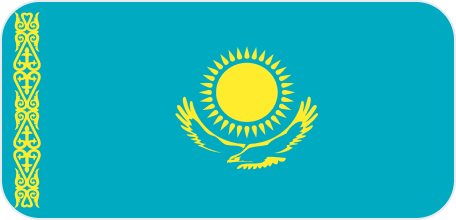
-
Capital
Astana (Nur-Sultan)
-
Language
Kazakh, Russian
-
Population
Approximately 19 million
-
Economy
Rich in natural resources, particularly oil, gas, and minerals.
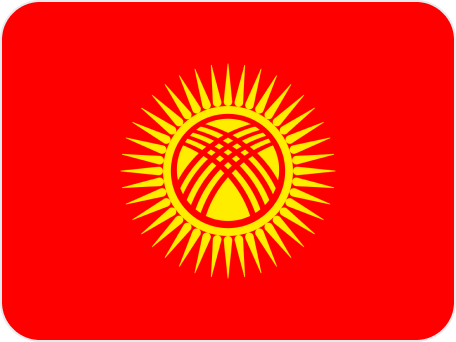
-
Capital
Bishkek
-
Language
Kazakh, Russian
-
Population
Approximately 6.6 million
-
Economy
Agriculture-based economy with growing mining and textile sectors.

-
Capital
Moscow
-
Language
Russian
-
Population
Approximately 146 million
-
Economy
Largest economy in the EAEU, focused on energy, manufacturing, and services.
Trade and Investment Opportunities
-
Trade Opportunities
EAEU offers substantial potential for Philippine exports of electronic products, agricultural products, and seafood.
-
Electronic Products
Philippine electronic components and appliances have high demand in the EAEU market.
-
Agricultural Products
Philippine mangoes, bananas, and other agricultural products are popular among EAEU consumers.
-
Seafood
High demand for Philippine tuna, shrimp, and other seafood in the EAEU's food market.
-
Investment Opportunities
There are numerous opportunities for Philippine companies to invest in EAEU's technology, natural resources, and service sectors.
-
Technology
Philippine IT companies can collaborate with EAEU tech firms to enhance competitiveness.
-
Natural Resources
Philippine companies can participate in EAEU's natural resource extraction and processing industries.
-
Services
Philippine service companies can enter the EAEU market to provide a range of services, including business process outsourcing (BPO) and financial services.


Philippines-Chile FTA
Philippines-Chile Free Trade Agreement (Proposed/Under Study: 2015)
The Significance of the Agreement
Agreement Overview
The proposed Philippines-Chile Free Trade Agreement (FTA) aims to enhance economic cooperation and reduce trade barriers between the Philippines and Chile. This agreement seeks to promote the exchange of goods, services, and investments by granting preferential access, ultimately fostering closer economic ties and boosting bilateral trade and investment.
Key Benefits

Reducing tariff and non-tariff barriers to facilitate trade between the Philippines and Chile.

Encouraging bilateral investments through investment protection and promotion clauses.

Stimulating economic growth and creating jobs in both countries.

Providing better market access for Philippine products in Chile and vice versa.

Enhancing the competitiveness of businesses in both countries through improved market access and reduced trade costs.
Expected Effects
- Increased
Exports - Investment
Inflow - Strengthened
Economic
Ties
-
Increased Exports
Increased Exports: Expanding the market for Philippine agricultural products, seafood, and electronic goods in Chile.
-
Investment Inflow
Encouraging Chilean technology and financial services to invest in the Philippines.
-
Strengthened Economic Ties
Enhancing mutual economic ties and fostering sustainable growth.
The Significance of the Agreement Signing
The study and proposed negotiations for the Philippines-Chile FTA represent a significant step towards deepening bilateral economic relations. The key significances are:
Enhanced Interregional Relations
The proposed FTA aims to promote stronger economic ties between the Philippines and Chile, facilitating closer cooperation in various sectors. This strengthens diplomatic relations and opens new avenues for collaboration.
Economic Diversification
The agreement supports economic diversification by encouraging trade and investment in a broader range of sectors, reducing dependence on traditional markets, and enhancing economic resilience.
Market Expansion
By negotiating preferential access, both countries can expand their markets and create new opportunities for exporters and investors, leading to increased economic activity and job creation.
Support for SMEs
The proposed FTA aims to provide small and medium-sized enterprises (SMEs) in both countries with better access to each other's markets. This supports the growth and development of SMEs, fostering inclusivity and diversity in the economy.
Regional Economic Integration
The agreement contributes to regional economic integration by strengthening economic linkages between Southeast Asia and Latin America, promoting stability, and encouraging cooperation within and between the regions.
Importance of Target Country Markets in the Agreement
Overview of Chile
Chile is one of the most stable and prosperous economies in Latin America with a diverse industrial base and significant growth potential. Chile offers substantial market opportunities for Philippine products and services due to its strategic location and demand for high-quality goods.
Economic Significance
- i. Stable Economy: Chile has a stable and growing economy with low inflation and strong fiscal policies.
- ii. High Purchasing Power: Chileans have a relatively high purchasing power compared to other Latin American countries.
- iii. Diverse Economy: Chile is competitive in various industries such as mining, agriculture, and services.
Major Industries and Trade Items
Chile is the world's largest producer of copper.
Chile has a growing financial services sector and a robust tourism industry.
Chile is a major exporter of fruits, wine, and seafood.
Implementation Schedule of the Agreement (Proposed)
Partner Country Information
Country Overview and Economic Trends

-
Capital
Santiago
-
Language
Spanish
-
Population
Approximately 19 million
-
Economy
Highly developed and stable, major industries include mining, agriculture, and services.
-
Trade
In 2023, trade volume with the Philippines was approximately $1 billion, with major Philippine exports being electronic products, seafood, and agricultural products, and major imports being copper, fruits, and wine.
Trade and Investment Opportunities
-
Trade Opportunities
Chile offers substantial potential for Philippine exports of electronic products, agricultural products, and seafood.
-
Electronic Products
Philippine electronic components and appliances have high demand in the Chilean market.
-
Agricultural Products
Philippine's mangoes, bananas, and other agricultural products are popular among Chilean consumers.
-
Seafood
High demand for Philippine tuna, shrimp, and other seafood in Chile's food market.
-
Investment Opportunities
There are numerous opportunities for Philippine companies to invest in Chile's technology, mining, and service sectors.
-
Technology
Philippine IT companies can collaborate with Chilean tech firms to enhance competitiveness in the global market.
-
Mining
Philippine companies can participate in Chile's copper mining industry and related sectors.
-
Services
Philippine service companies can enter the Chilean market to provide a range of services, including business process outsourcing (BPO) and financial services.





